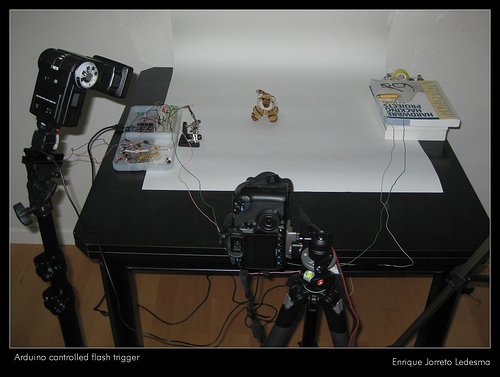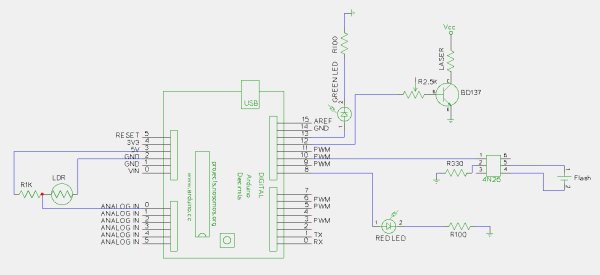his project is mainly based in this one from Glaciar Wanderer. I just liked his idea and worked it on my own. (I think this guy and me would be friends, as the projects he has in his photography category are things I’ve been wanting to do since I got my Arduino.

I used a 4N26 optocoupler to trigger the flash, connected to a hotshoe-to-pc-sync adaptor in my Vivitar 285HV. Using an optocoupler you get sure that no current from the arduino will go to the flash, and no current from the flash will go to the arduino. Anyway, you should check the trigger voltage of your flash, as if it has a high voltage (even hundreds of volts) it could damage the optocoupler and everything that is connected to it (arduino, computer, you…).

For more detail: Flash trigger
